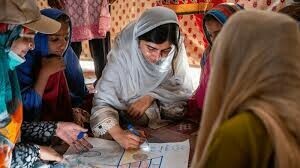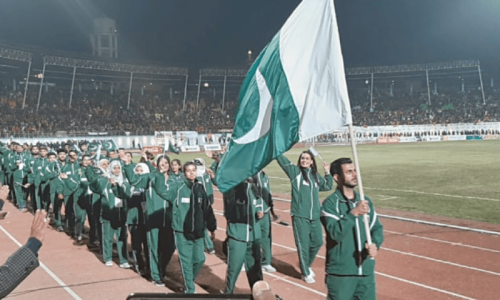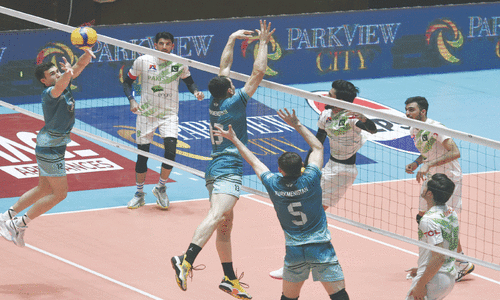THE amount of subsidy given to sugar tycoons on their 2012 exports, whose ‘justification’ has been challenged by the National Assembly’s standing committee on industries and got its payment stalled, pales in importance when compared with the latest figure of subsidy being paid to them on their current exports.
The rationale remains the same in both cases. The Economic Coordination Committee (ECC) of the Cabinet gave permission for sugar export in November 2012 and then in its meeting on March 6, 2013 approved an inland freight subsidy of Rs2.1bn at the rate of Rs1.75/kg on 1.2m tonnes and Re1/kg on 0.5m tonnes on grounds that the ‘prices in the international market were on decline’ and that there were ‘abundant sugar stocks’ in the country.
Similarly, on Dec 7, 2015, the ECC allowed 500,000 tonnes of sugar for export with Rs13/kg subsidy, amounting to Rs6.5bn, because of ‘falling prices’ in the international market and that production at home is expected to be in surplus in the wake of a bumper sugarcane crop.
The reason why the standing committee opposed the 2012 subsidy was that it provided ‘benefits to sugar millers only and not the farmers’. But there is no share of farmers in the latest subsidy as well. Suggestions that a big chunk of surplus sugar be provided to low-income sections of population on lower prices through utility stores were rejected by the finance ministry.
The ministry of industries and production is reported to have opposed export of such a huge quantity and wanted it to be restricted to 120,000 tonnes, the leftover of the last season. The exportable surplus, it suggested, should be provided to the Utility Stores Corporation at the international market price and the price differential may be taken up by the federal government. But the ECC favoured the demand of Pakistan Sugar Mills Association for export of 500,000 tonnes of the commodity.
However, the federal government has this time been more sympathetic towards the cane growers, while offering billions of rupees in subsidy to the millers, by linking the export of sugar with payment of outstanding dues to the farmers up to the last season and having started crushing on full scale.
Suggestions that a big chunk of surplus sugar be provided to low-income sections of population on lower prices through utility stores were rejected by the finance ministry
To know the exact basis of 2012 subsidy to sugar millers, most of whom sit in the assemblies and exercise great influence in matters of decision-making, the NA committee contacted ministries concerned to obtain relevant information in this regard but failed to get anything.
The committee chairman, Asad Umar, then asked the Ministry of Industries and Production and the Ministry of Commerce, or either of the two, to refer the matter to National Accountability Bureau (NAB) to find out the basis on which the subsidy decision was taken. But both the ministries refused to do so.
The commerce ministry said that no action as such has been taken by it and the reference to the NAB, if at all, is to be made by it and not by the standing committee. But an additional director, NAB, who was present in the committee’s meeting on May 8, 2015 said NAB treats the instructions of the Public Accounts Committee and standing committees as executive orders and that the sugar subsidy case can be sent to NAB for probe by the standing committee itself. Encouraged by his statement, the committee sent the case to NAB on May 19, 2015.
The commerce ministry has, meanwhile, directed the Trade Development Authority of Pakistan (TDAP) not to release subsidy to sugar mills till completion of the NAB inquiry. Asad Umar, who is actively pursuing the case, was informed by a NAB official during a recent meeting of the committee that the bureau has obtained the record from the ministries concerned and the TDAP and that the inquiry will be completed within one month.
Meanwhile, the government has decided in principle to deregulate the sugarcane prices from the new season this year so that the ‘government’s involvement and provision of subsidy’ is eliminated once and for all.
The whole problem arises from fixing of support price by the federal government and difference in prices set by the provincial governments. The final decision would, however, be taken by the federal cabinet after consultations with the provinces.
However, while allowing export of 0.5m tonnes, the ECC also shifted half of the burden of subsidy to the provinces who will release over Rs3bn to the sugar tycoons. It was in this context that the commerce ministry, in its summary, sought subsidy on the export of 250,000 tonnes but the ECC ignored the proposal and allowed export of 500,000 tonnes.
Planning and Development Minister Ahsan Iqbal, who was present in the Dec 7 meeting, suggested that sugar mills should spend 10pc of the subsidy on research and development activities.
Published in Dawn, Business & Finance weekly, January 18th, 2016













































